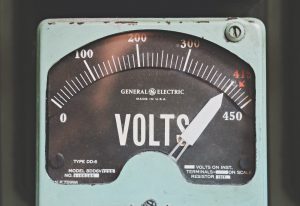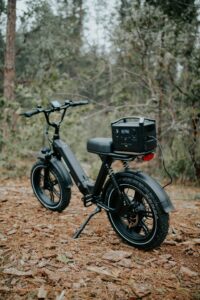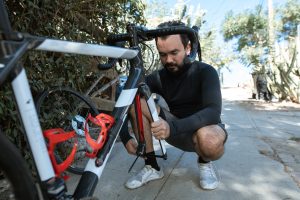Introduction
A watt is a unit of power. It is a measure of the rate at which energy is transferred or converted. There are many types of electric bikes, but they all have one thing in common: they use an electric motor to help propel the bike forward. Electric bikes are becoming more and more popular because they are cheaper than cars and motorcycles, easier to maintain, and less polluting to the environment. They are also a lot faster than cars and motorcycles, but they’re much heavier than bikes and less maneuverable.
Electric bikes are becoming more and more popular as a way to commute and get around. The market is growing rapidly and it’s expected that by 2020, electric bikes will make up 10% of the bicycle market. There are many different types of electric bikes on the market. They range in price from $200 to $3,000. Some people buy an electric bike because they want a more efficient way of commuting while others use it for exercise or fun. No matter why you want an electric bike, it’s important to know what you’re getting before you make your purchase.
What is the Difference Between Watts and Volts?
The voltage of an electric bike is measured in Volts, which is the same as Watts. The higher the voltage, the more powerful the motor will be. E-bikes with a lower power output have less torque and are not as efficient at climbing hills or going up steep inclines. This makes them better for commuting and shorter rides on flat terrain.
The power of the motor is measured in watts. A higher wattage means that it will be more powerful and faster. It also helps to increase the range of the bike. Some bikes have a lower wattage but they are still very good quality and can go up to 50 miles on one charge. The battery is the most important part of an e-bike. It is responsible for getting you up to speed and keeping you there. The more powerful your battery, the longer it will last before needing a recharge.
Power
E-bike power is the amount of energy that a battery pack can deliver. It’s measured in wattage (W) or kilowatt hours (kWh). The higher the wattage, the more powerful and efficient your e-bike will be. The average e-bike has around 500W of power, which is enough to get most riders up to 25mph on flat ground and 20mph on hills. If you want to go faster, look for a model with 750W or 1000W of power. These bikes are capable of going up to 30mph on flat ground and 24mph uphill.
The wattage rating of an e-bike is the maximum power it can deliver. It’s a measure of how much energy the battery pack can store and release in one second. The higher the wattage, the faster you can go up hills or accelerate on flat ground. A good rule of thumb is to keep your total range at about half a mile per hour (0.5 mph) above your top speed for every 10 watts you add to your bike’s output
Range
The range of an e-bike is measured in ‘miles’ and can be calculated by multiplying the battery capacity (in watt-hours) by the pedal assist level. For example, if you have a 250W geared hub motor on a bike with 500Wh of battery then your range will be 25 miles. For most people, anywhere between 20 to 40 watts is enough to get around town or commute with ease. If you want to go further than that then it’s time for some serious research.
When you buy an electric bike, you’re making a smart choice for the environment, your health, and your active lifestyle. Electric bikes are a modern invention that uses powerful motors to assist riders in moving from one place to another. Thanks to their silent power, electric bikes are also ideal for the urban environment. All of these advantages make electric bikes a great choice for daily transportation.
Watt rating facts
The watt rating for an e-bike is a measure of how much power the bike’s motor can produce. It’s a simple concept, but it’s important to understand the value of watt ratings. The watt rating tells you how many watts are being produced by your e-bike’s motor. If you have a higher watt rating, you’re going to be able to go faster and climb hills more easily. If you have a lower watt rating, your bike will be harder to pedal up hills and may not be able to go as fast on flat terrain. Watt ratings are different from other types of ratings on electric bikes because there are two numbers listed: one for maximum power output (in watts) and one for maximum speed (in mph).
E-bike popularity
E-bikes are becoming more popular in the United States, with more than one million sold in 2020. Electric motors power the e-bike for it to help you reach your destination faster and more efficiently than on foot.
E-bikes have a lot of benefits for people who want to get from point A to point B quickly or have trouble walking or climbing hills. E-bike uses are the same as regular bikes, except that they have an electric motor. The main benefit of riding an e-bike is that it allows you to get out and about in your own time without having to wait for public transport. It will also help you save money on fuel costs because they have a much lower energy consumption than traditional bikes.
The battery is charged via an electric charger, which plugs into the main power supply. In most cases, this means that you have to plug the bike into a wall socket to charge it up. You can use this bike in places where there are no roads and also in areas that have very bad road conditions. This means that you do not have to worry about your safety while riding an e-bike because there will never be any chances for you to fall from the bike due to bad road conditions or lack of roads.
How much power does an e-bike have?
The amount of power an e-bike has is important because it affects how far it can go before they need to be recharged. To find out how much power an e-bike has, look at the battery type (smaller batteries require less power), whether it has a throttle control system (which allows you to pedal harder), and if it uses motor assistance (which makes pedaling easier).
The range of an e-bike varies from model to model, but generally speaking, you can expect to get about 20 miles per charge. E-Bikes are popular with commuters because of their long range and the speed at which they travel. They also tend to be more affordable than other types of bikes and can be purchased for under $1,000.
When it comes to power output, most E-Bikes come with motors that produce up to 750 watts of power. That’s enough to get most riders up hills quickly and efficiently. It’s important to note that while e-bikes do use less energy than other bike systems, they still require some amount of power to operate. The average rider will burn around 15-20 calories per hour when riding an e-bike at maximum speed (15mph).
E-bike battery
The e-bike battery is a critical element of the e-bike. It is responsible for providing power to the motor and charging system, as well as providing energy when the bike is in motion. Batteries can be either single cells or multi-cell. The most popular types are lead-acid and lithium-ion. Lead acid batteries are cheaper than lithium ions, but they have less power than lithium ions.
The e-bike battery works by using a chemical reaction to store energy. The chemical reaction uses the chemical energy in the battery and converts it into electrical energy. Charge your battery before you leave home or use it for extended periods, if possible. If you don’t have access to a charger, charge at work or a friend’s house while they are not using their e-bike.

E-bike motor
The e-bike motor is a DC electric motor that can produce up to 200 watts of power. The motor’s block is made from aluminum and it has three main components: the stator, the rotor, and the brushless DC controller. The stator contains four coils that are connected to the rotor. These coils generate a magnetic field that interacts with an electromagnet inside of the rotor. The electromagnet creates an electromagnetic attraction between the two poles of the magnet.
An e-bike motor is a system that converts electric power from the battery into mechanical energy by way of a series of magnets and gears. There are two main types of motors: hub motors and direct drive. Direct drive motors have only one magnet mounted on a shaft that runs through the center of the wheel.
The motor’s design allows it to convert this electricity into torque, which is a measure of how much force can be exerted by an object in motion over time. Torque is what causes your wheels to turn. The e-bike is a battery-powered bicycle with an electric motor, which means that it works just like an electric car. The motor helps you pedal faster and more efficiently. It allows you to get to where you need to go faster and with less effort.
Charge

The e-bike comes with a battery pack that holds a charge for up to 20 miles of travel on a single charge. This allows for longer trips and an increased range between charges. It also means that you can use your e-bike when there’s no electricity available at all—if there’s no power in your neighborhood, but you still want to be able to get around town.
If you have an e-bike, it is important that you know how to charge it. This will allow you to use the bike for longer periods and make sure that it does not run out of battery power. The first thing that should be done when charging your e-bike is to check whether or not the charger has been installed properly. You can do this by looking at the bottom of your bicycle where there will be a small hole with a wire coming out from inside the hole.
E-bike charge is the electric current that flows into a battery when it is connected to an electric power source. It’s measured in milliamps (mA) and volts (V). The higher the mA, the more energy you can store in your battery. The higher the V, the faster your bike will go. The most common reason for needing to recharge an e-bike battery is because the battery has run out of power and needs replacing before you can continue riding for another day or so.
E-bike maintenance 
This includes checking, replacing, or cleaning parts such as brakes, gears, tires, and batteries. It also includes adjusting seat height and handlebars for a comfortable fit on your body. Motorized bicycle or e-bike is the latest in technology and has a lot of benefits. It’s environmentally friendly, cost-effective, and fun to ride. E-bikes are also much quieter, cleaner, and more energy-efficient than conventional bikes. Generally, e-bike riders are responsible when maintaining their vehicle. This includes changing the parts and keeping the bike well-lubricated.
To clean an e-bike, you have to use a special brush. This is the best way to clean it thoroughly because it will not damage the frame or the battery. You should also make sure that no dirt remains on the chain and that there are no scratches on the wheels or any other part of your bike. If you want to keep your bike in good condition, then you should take care of it regularly by washing and cleaning it with water and soap.
What e-bike riders need to know
Ebike parts are easy to replace compared to conventional bikes. You can even change the e-bike’s color or upgrade its performance. A good place to start your maintenance is the drive chain and gears. You’ll need a special chain tool for this, but you can also use a screwdriver if necessary. Replacing worn-out parts with new ones ensures your e-bike runs smoothly and safely. You can also clean and oil your parts as needed to keep them running smoothly.
E-bike dangers are the same as regular bike dangers. However, there is a difference between e-bikes and regular bikes. E-bikes have more power and speed than regular bikes. They can be more dangerous for you if you don’t know how to ride them properly. You should always wear a helmet when riding an e-bike because the motor will take longer to stop than your body would when it hits something hard like another person or object on the road. You should also make sure that you are in control of the bike at all times while riding it
Conclusion
The Watt rating is the most important specification working on an electric bike. This is because it determines how powerful the motor is. Bikes with higher watt ratings will go faster than those with lower watt ratings but may cost more as well. The watt rating is the measure of how much power a bicycle can produce at a given level of exertion. The higher the watt rating, the more power is available to propel the bicycle. Knowing this, it’s important to find the ideal settings for your bike.
The best way to determine your ideal settings is to test them out and see how they feel. You should start by testing out lower wattage settings and gradually increasing them until you feel comfortable. E-bikes are often labeled as unprefixed watts, having power varying from roughly 250 to 900 watts.
